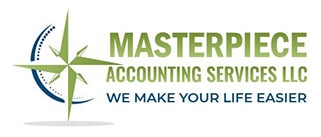For the financial information to be accurate, particularly for the investors who will rely on it to the extent of making investment decisions, companies include noncash items in their accounting reports. This is particularly true when using the accrual method of accounting.
There are several noncash items like deferred income tax, stock-based compensations, among others. One of the most common noncash expenses is depreciation because there is no cash disbursed when calculating and reporting the depreciation expense. This is because the purchase occurs in one period and the computation of depreciation in another. For instance, a company that purchased construction equipment for $150,000 on 04/2/18 has an outflow of cash for that amount on that date. When the equipment is placed in service and is ready to be used by the company, the equipment’s depreciation will start. Let’s say that the company uses straight-line method and the useful life of the asset is 20 years (considering there was no salvage value), then the first month’s depreciation will be $7,500 and for each month until it is fully depreciated. Although the $7,500 reduces the company’s income, there is no impact on the company’s bank account because there was no outflow in this particular transaction. This is why the depreciation expense is added back to the Operating section in the Cash Flow Statement since there was no money paid out and for this reason, it’s presented as a non-charge item in the income statements (What is a noncash expense?, Weblog post, n.d.).
In my opinion, depreciation should be considered an expense in the accounting section because it is a way of keeping track of the deterioration or use of the specified asset over time. The wear and tear of a company’s assets, except for land, which will eventually stop functioning should be tracked during their use. The other side of this benefit is the tax shield that depreciation expense constitutes for businesses. “A depreciation tax shield is a tax reduction technique under which depreciation expense is subtracted from taxable income. The amount by which depreciation shields the taxpayer from income taxes is the applicable tax rate, multiplied by the amount of depreciation (Depreciation tax shield, Weblog post, 2019, para. 1). One easy way of illustrating this is by multiplying the depreciation for the year of a business, for instance, $400,000 multiplied by the business tax rate of 21% = $84,000. According to Ross et al., 2016, the potential impact on the cash flow of depreciation expense is that it diminishes the taxable income, and therefore the tax to be paid. In this example, every dollar expensed as depreciation saves the company $84,000 (p. 281).
For a business that purchases heavy and expensive equipment like construction companies, utilizing the tax shield is very beneficial. One way of doing this is by utilizing accelerated depreciation with the purpose of deducting large sums of money at the beginning of the first years of the assets and less as time goes by. This is a great tax strategy for companies like these, and even for smaller companies that probably experience, sudden and unexpected rise in their revenue in a specific year. The company can continue depreciating the asset(s) under the straight-line method for accounting purposes while using the accelerated depreciation for tax purposes (Depreciation tax shield, Weblog post, 2019).
Depreciation tax shield [Web log post]. (2019, January 03). Retrieved from https://www.accountingtools.com/articles/what-is-a-depreciation-tax-shield.html]
What is a noncash expense? [Web log post]. (n.d.). Retrieved from https://www.accountingcoach.com/blog/what-is-a-noncash-expense.
Ross, S., Westerfield, R., & Jordan, B. (2016) Essentials of corporate finance (9th ed.). New York, NY: Mc-Graw Hill.
Depreciation tax shield [Web log post]. (2019, January 03). Retrieved from https://www.accountingtools.com/articles/what-is-a-depreciation-tax-shield.html]
What is a noncash expense? [Web log post]. (n.d.). Retrieved from https://www.accountingcoach.com/blog/what-is-a-noncash-expense.
Ross, S., Westerfield, R., & Jordan, B. (2016) Essentials of corporate finance (9th ed.). New York, NY: Mc-Graw Hill.


